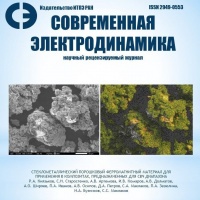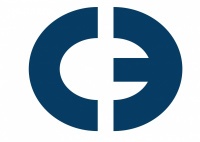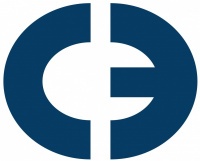
Contents
Message from the Editors
In memory of Vladimir Sergeevich Solosin (28.05.1953 - 17.07.2024)
Section 1. Topics on theoretical electrodynamics
GRAPHENE ON A FERROMAGNETIC SUBSTRATE: INSTABILITY OF THE ELECTRONIC LIQUID
D.N. Dresvyankin, A.V. Rozhkov, A.O. Sboychakov
Abstract
We previously show [JETP Letters, 114, 763 (2021)] that a graphene sample placed on a ferromagnetic substrate demonstrates a cooperative magnetoelectronic instability. The instability induces a gap in the electronic spectrum and a canting deformation of the magnetization near the graphene-substrate interface. In this paper we prove that the interaction between the electrons in graphene strongly enhances the instability. Our estimates suggest that in the presence of even a moderate interaction the instability can be sufficiently pronounced to be detected experimentally in a realistic setting.
Keywords: graphene, ferromagnetic substrate, canted magnetization, magnetoelectronic instability, spin density wave, spectrum gap
Section 2. Topics on experimental electrodynamics
GLASS-METAL POWDER FERROMAGNETIC MATERIAL FOR USE IN COMPOSITES, INTENDED FOR MICROWAVE RANGE
R.A. Knyazkov, S.N. Starostenko, A.V. Artemova, I.V. Komarov, A.V. Dolmatov, A.O. Shiryaev, P.A. Ivanov, A.V. Osipov, D.A. Petrov, S.A. Maklakov, P.A. Zezyulina, N.A. Buznikov, S.S. Maklakov
Abstract
A technique to synthesize a composite powder comprised of metal and glass is proposed. The composite is obtained by sintering at 800 go 1000 ° C in argon flow of glass and carbonyl iron powders. The synthesis is performed in two stages with an intermediate sintering and milling. The powder stability to oxidation while heating in air is compared with that of pure carbonyl iron powder. The obtained glass-metallic powder with the size about is 100-400 mcm was used to fill paraffin-bound composites. Complex permittivity and permeability of these composites were measured in the frequency band 0,1 - 20 GHz. The X-band reflectivity spectra of the composites are compared with that of similar composites with carbonyl iron. Constitutive parameters of a glass-metallic particle are retrieved applying the Bruggeman mixing model, the retrieved parameters are used to calculate the reflectivity spectrum of a shorted glassmetalic layer.
Keywords: microwave measurements, composite materials, mixing formulas, iron oxidation, microwave permeability, permittivity
Section 3. Metodological notes
CAN FLOQUET'S THEORY SERVE AS A FOUNDATION FOR THE APPLICATION OF VIRTUAL LEVELS IN THE RAMAN EFFECT?
A.P. Vinogradov, E.S. Andrianov
Abstract
In many monographs, Raman scattering (RS) is still explained as a two-stage process. At the first stage, the quantum of incident radiation is absorbed and the molecule goes into an excited state. At the second stage, a photon is emitted with a frequency different from the frequency of the incident photon. Since the levels necessary for the absorption of a photon are usually not present in a molecule, they are replaced by virtual levels. However, there is no justification for the existence of virtual levels today. There are vague statements that when interacting with an external field, the spectrum of the molecule is rebuilt, and such levels arise. In the case of illumination of a two-level system (TLS) by a harmonic external field the Hamiltonian of the system periodically depends on time, which makes it possible to use the Floquet theory, which predicts the appearance in the problem of Floquet frequencies that is close to the frequency of the incident field. Is shown that this approach does not lead to the appearance of the desired level. The dynamics of the system are reduced to the known Rabi oscillations, and the Floquet frequencies are not included in the final answer.
Keywords:Raman scattering, virtual levels, the Floquet theorem

Editorial address: 13 b. 6, Izhorskaya st.,
This site respects your rights and maintains confidentiality when filling out, transmitting and storing your confidential information.
Placing an application on this site means your consent to the processing of data and the further transfer of your contact information to our company.
Personal data means information related to the subject of personal data, in particular the name, contact details (email address) and other data classified as personal data by Federal Law of July 27, 2006 No. 152-FZ “On Personal Data.”
The purpose of processing personal data is to inform about the services provided by our company.
